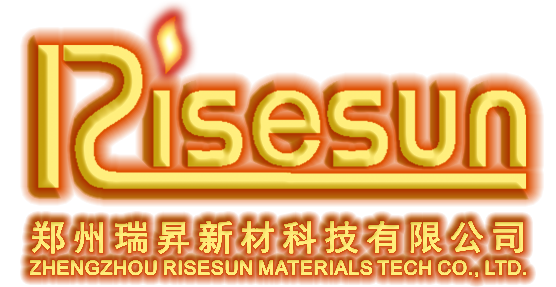02
2024
-
12
The Advantages of Silicon Carbide Heating Element Furnaces: A Comprehensive Guide
Silicon carbide heating element furnaces are revolutionizing the electric heating landscape with their impressive thermal properties and robust performance. Silicon carbide (SiC) is a compound semiconductor that offers significant advantages over traditional heating elements, making it an ideal choice for high-temperature applications. One of the primary benefits of silicon carbide heating element
Silicon carbide heating element furnaces are revolutionizing the electric heating landscape with their impressive thermal properties and robust performance. Silicon carbide (SiC) is a compound semiconductor that offers significant advantages over traditional heating elements, making it an ideal choice for high-temperature applications.
One of the primary benefits of silicon carbide heating elements is their ability to withstand extreme temperatures. Unlike conventional materials that may degrade or fail at elevated temperatures, SiC maintains its structural integrity and performance, allowing for continuous operation in harsh environments. This thermal resilience makes silicon carbide heating element furnaces particularly suitable for industrial processes such as metal melting, ceramic sintering, and glass production, where temperatures can exceed 1500°C.
In addition to their high-temperature capabilities, silicon carbide heating elements are known for their exceptional energy efficiency. They have a low electrical resistance, which translates to reduced energy consumption during operation. This efficiency not only lowers operating costs but also contributes to a more sustainable energy footprint, making SiC furnaces an environmentally friendly choice for a range of applications.
Another noteworthy characteristic of silicon carbide heating element furnaces is their rapid heating and cooling rates. SiC can achieve desired temperatures in a fraction of the time compared to traditional heating elements. This fast response time allows for improved process control and shorter cycle times, which can be crucial in manufacturing settings where time is money.
Moreover, silicon carbide heating elements offer excellent thermal conductivity, ensuring even heat distribution throughout the furnace. This uniform heating minimizes temperature gradients, reducing the risk of thermal stress and enhancing the quality of the end product. Whether it’s in the production of advanced ceramics or the processing of electronic components, the consistent heating provided by SiC heating elements can lead to improved yield and product reliability.
Silicon carbide heating element furnaces also boast a longer lifespan compared to their metallic counterparts. Their resistance to oxidation and thermal shock means that they require less frequent replacement, translating to lower maintenance costs over time. This longevity is a significant advantage for industries looking to optimize their operational efficiency and minimize downtime.
In summary, silicon carbide heating element furnaces represent a significant advancement in electric heating technology. Their ability to withstand high temperatures, energy efficiency, rapid heating and cooling rates, excellent thermal conductivity, and longevity make them an attractive option for various industrial applications. Choosing a silicon carbide heating element furnace not only enhances operational performance but also aligns with sustainability goals, establishing a new standard in the electric heating sector.
One of the primary benefits of silicon carbide heating elements is their ability to withstand extreme temperatures. Unlike conventional materials that may degrade or fail at elevated temperatures, SiC maintains its structural integrity and performance, allowing for continuous operation in harsh environments. This thermal resilience makes silicon carbide heating element furnaces particularly suitable for industrial processes such as metal melting, ceramic sintering, and glass production, where temperatures can exceed 1500°C.
In addition to their high-temperature capabilities, silicon carbide heating elements are known for their exceptional energy efficiency. They have a low electrical resistance, which translates to reduced energy consumption during operation. This efficiency not only lowers operating costs but also contributes to a more sustainable energy footprint, making SiC furnaces an environmentally friendly choice for a range of applications.
Another noteworthy characteristic of silicon carbide heating element furnaces is their rapid heating and cooling rates. SiC can achieve desired temperatures in a fraction of the time compared to traditional heating elements. This fast response time allows for improved process control and shorter cycle times, which can be crucial in manufacturing settings where time is money.
Moreover, silicon carbide heating elements offer excellent thermal conductivity, ensuring even heat distribution throughout the furnace. This uniform heating minimizes temperature gradients, reducing the risk of thermal stress and enhancing the quality of the end product. Whether it’s in the production of advanced ceramics or the processing of electronic components, the consistent heating provided by SiC heating elements can lead to improved yield and product reliability.
Silicon carbide heating element furnaces also boast a longer lifespan compared to their metallic counterparts. Their resistance to oxidation and thermal shock means that they require less frequent replacement, translating to lower maintenance costs over time. This longevity is a significant advantage for industries looking to optimize their operational efficiency and minimize downtime.
In summary, silicon carbide heating element furnaces represent a significant advancement in electric heating technology. Their ability to withstand high temperatures, energy efficiency, rapid heating and cooling rates, excellent thermal conductivity, and longevity make them an attractive option for various industrial applications. Choosing a silicon carbide heating element furnace not only enhances operational performance but also aligns with sustainability goals, establishing a new standard in the electric heating sector.



